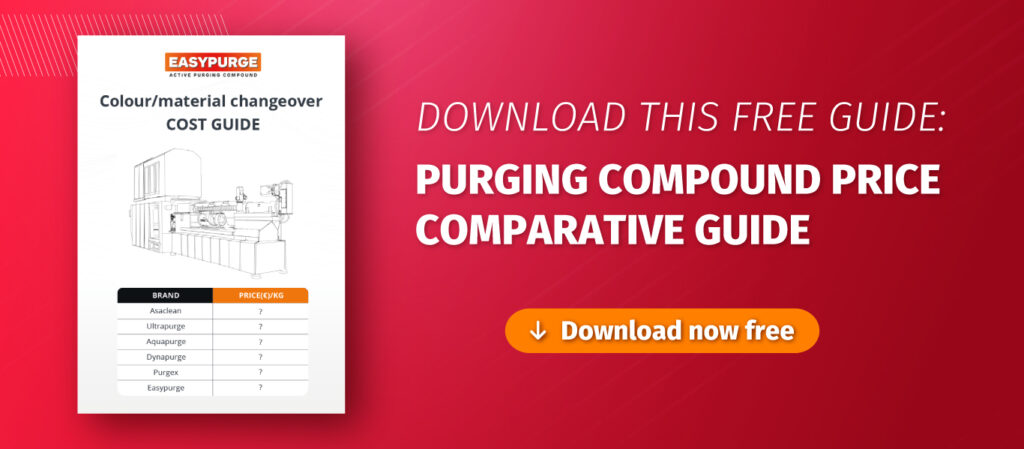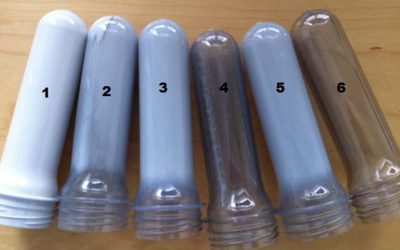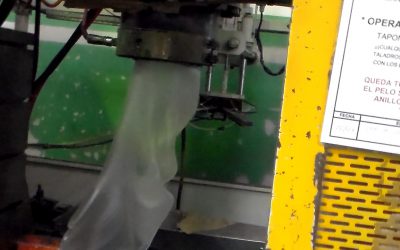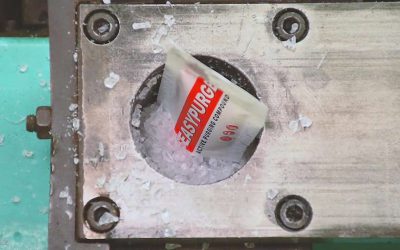Color streaking can be divided into two categories. The first type is caused by material degradation, the second one is caused by pigments. Both types of streaks can appear spontaneously, even a long time after a colour change.
We are going to refer fundamentally to the second option in this article.
By changing colours from light to dark, we minimize this problem; many factories tend to organise their productions following this premise, but today the market moves so fast that it forces production to be subordinated to marketing demands.


So, we must get ready to face those problematic changes at any time.
Although you can already guess that the solution is to use a good purging compound, it is worth analyzing what happens when you don’t use it.
Due to the complexity of the different technical parts in the injection and extrusion moulding machines, as well as the rest of the variables in the process, such as temperature, MFI, pressure, and screw RPM, contamination zones are inevitable.
Colour streaks: where does contamination originate?
John Bozzelli, an experienced injection moulding consultant and scientific, comments:
“At the end of the transition zone and the beginning of the dosing zone, there is often a situation where there is very little flow of the polymer melt.”
Consequently, particles such as resin granules and colour residues remain for a long time before the flow removes them.
Screw
Most of the time, the barrel is not filled and works with different amounts of plastic depending on back pressure, viscosity, screw rpm, and other variables.
When these conditions change for any reason, colour deposition begins.
When the colour deposited on the back of the fillets comes off, it contaminates the material.
Check Valve
Injection machines are equipped with check valves to prevent material from flowing back during dosing and injection. This type of valve suffers a great deal of wear, which causes pressure loss in the plasticizing zone where the material can remain stagnant.
Nozzle
There are 4 types of nozzles.
An inadequate design of the nozzle can originate negative flow zones that do not allow the expected displacement of the molten material. This generates an accumulation of pigment that later causes streaks on the finished piece.
Hot Runners
A poor manifold geometry design can generate negative flow zones accumulating pigments or degraded material that comes off, causing colour streaks or black specks on the finished pieces.
A separate matter is the design of the tips in the cap injection moulds.
They inexorably generate streaks due to their operating principle.

Extrusion Die
Due to the complexity of the extrusion head geometry design, it is normal to find pigment accumulation areas that are later dragged, forming streaks.
Each type of extrusion head has a characteristic area where the material tends to stagnate.
In sheet extruders, for example, the material accumulates on the edges, as we can see in the picture.

The speed profile shows that the polymer near the die walls has almost zero linear velocity; therefore, the material tends to accumulate.
In Extrusion Blow Moulding, this problem is in the flow channels of the extrusion head.
During extrusion, colour sediments generate in so-called “dead water zones” where the flow velocity is nearly zero.
You can remove them by spending a lot of working hours on the machine or using a suitable purging compound.

Summing up
All dead flow zones in the equipment, where material can stagnate, are sources of contamination.
These include barrel and screw surface damage, filter meshes, poorly designed elbows, overly long connection pipes, vent holes, fractured surfaces, etc.
Conclusion
The manufacturers of machines and moulds in the sector are committed to improving their equipment to minimise colour streaks.
There has been significant progress in this area.
New technologies have made it possible to reduce colour change times considerably.
However, there is a compromise between the equipment designs and the rheological behaviour of the materials involved.
The complexity of the variables that intervene in achieving all quality requirements, suggests that using a good purging compound is the most viable solution.






